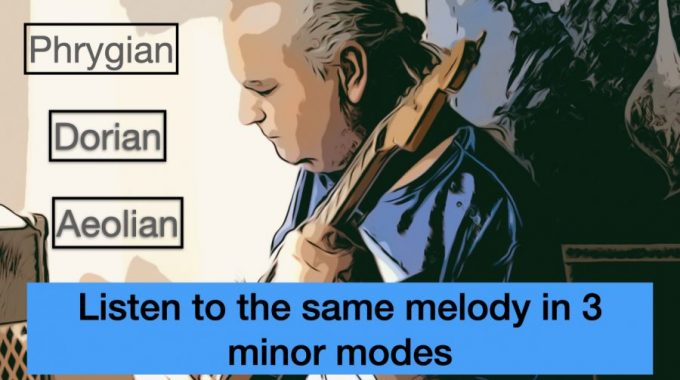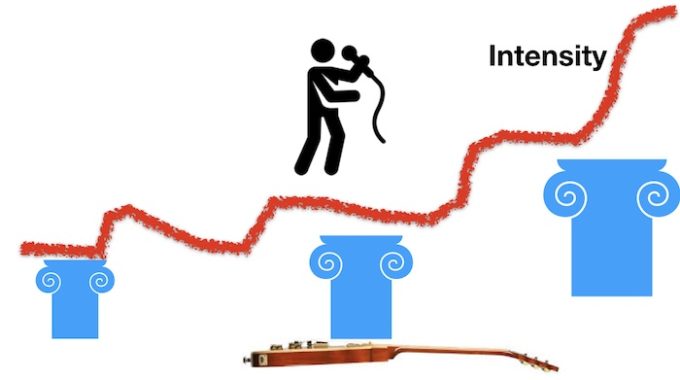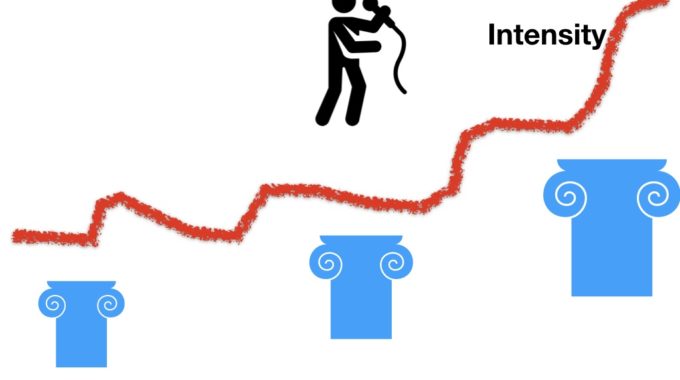The PivotingTechniques Pivoting Techniques This course is part of the songwriting modules at the creative…

The Dorian mode, Aeolian and Phrygian
Table of Contents
How to Harmonize the Same Melody in Different Music Modes
Listen to the same melody played in three different ways:
- The Aeolian Minor Mode
- The Phrygian Minor Mode
- The Dorian Minor Mode
All these modes create a minor feel , but each has its own special sound.
Do you agree? Listen to the songs and try to explain how they’re different. Write down any pictures or feelings you have while listening.
“Comparing the Emotional Differences in Aeolian, Dorian, and Phrygian Modes
Enhance understanding: The interpretation of this analysis varies from person to person. It’s likely that we all perceive the music similarly, but our emotional responses are influenced by our life experiences and aspirations.
On a personal note, connecting emotions to musical understanding is incredibly fulfilling. Acquiring knowledge about harmony has enabled me to discover unexplored facets of my inner being and breathe life into them. Consequently, the more I learn, the more effectively I can convey myself, leading to a heightened sense of satisfaction when I share my music with you.
How I Composed These 3 Versions
Are you interested in learning about how I created these three distinct versions on the guitar?
To start, the foundational element of any composition is its melody. Hence, I initially crafted the melody on the guitar.
After establishing the melody, I proceeded to determine its key. I vocalized the resting note of the melody, revealing a D. Subsequently, I considered whether the colour was that of a minor key or a major key. My conclusion pointed towards a minor quality.
Next, I dissected the melody, scrutinizing its individual notes. It became evident that I employed notes D, F, A, and C.
4 Identical Notes in 3 Different Scales
As you will learn in my level two courses , these notes are common to three scales:
The Bb scale
Bb C D Eb F G A
The F scale
F G A Bb C D E
and the C scale
C D E F G A B
The Dm is Found in 3 Scales
Each of these 3 scales have a Dm chord that is created within:
The Dm chord is the second chord of the C scale.
C Dm Em F G Am Bdim
The Dm chord is also the IIIm of the Bb scale .
Bb C, Dm Eb F Gm Adim
And the Dm chord is also the VIm of the F scale.
F Gm Am Bb C Dm Edim
Next Up: Adding Harmony to the Melody
Afterward, I made the decision to add harmonies to the melody by using chords derived from each of the scales, all while focusing on the central key of D.
Specifically, for the Dorian Minor Mode, my initial approach involved selecting chords from the following options: Dm, Em, F, G, Am, Bdim, and C. These chords are derived from the C scale.
Naturally, the chords I ultimately chose needed to complement the melody and contribute to establishing the Dm as the central tonal point.
Moreover, to introduce contrast and depth to the harmony centered around D, I opted for a chord featuring the B note.
This sequence of chords was my preference: Dm | G
I crafted this accompaniment drawing from techniques covered in the Level 4 course at The Creative Guitar Academy.
The outcome of this arrangement imparts a minor quality. This particular shade of minor is known as the Dorian mode.
The Phrygian Minor Mode:
For the second version, I picked chords like Dm, Eb, F, Gm, Adim, Bb, and C. These chords come from the Bb scale.
Naturally, I wanted the chords to match the melody and emphasize the Dm key in the center.
In this case, since D is the main note, I added some contrast by using chords with Bb and Eb notes. This mix tells the listener I’m using the Bb scale while still focusing on Dm.
Here’s the chord sequence I settled on:
And I made this accompaniment using things I learned from Level 4
This version has a minor feel, specifically the Phrygian mode.
The Aeolian Minor Mode:
For the third version, I went with chords like Dm, Edim, F, Gm, Am, Bb, and C. These chords are from the F scale.
Just like before, I wanted the final chords to fit well with the melody and highlight the Dm key in the middle.
Here, with D as the main note, I added contrast in the harmony by using a chord with Bb and E notes. This helps me show I’m using the F scale and still aiming for Dm.
Here’s the chord sequence I chose:
Again, I used what I learned from Level 4 at The Creative Guitar Academy to make this accompaniment.
This version also sounds minor, specifically the Aeolian mode.
Give these three guitar examples another listen to get a better grasp.
Conclusion
In summary, harmonizing the same melody in different modes creates unique emotional vibes while keeping a minor feel. Personal interpretations of music may vary based on experiences.
Connecting emotions with musical knowledge is fulfilling. Harmony understanding unlocks inner depth, enhancing self-expression in music.
Composing involves crafting the melody, selecting common notes from scales, and harmonizing with chosen chords for each mode.
Dorian, Phrygian, and Aeolian modes each convey a different kind of minor emotion. Contrasting notes and chords add richness.
Listen again to grasp the emotional nuances and how modes affect the melody.


